As the sunny days of spring give way to the more intense and direct summer sun, our gardens appear to change personality. The delicate pastel flowers of May and June that we enjoyed so much can suddenly seem washed out, leaving the garden looking tired and dull.
There is an easy two-step solution to this. First, create a strong picture frame using beautiful foliage that will help your garden transition from one season to the next with ease, and second, select flowers in richer, deeper shades that won't fade under the intense summer light.
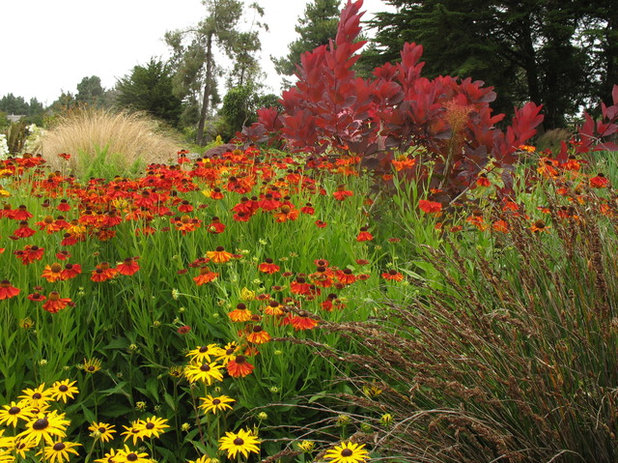
Le jardinet
A colorful swath of daisies is a summer garden highlight, and combining two different types, as shown here, adds an extra punch of color and excitement.
Imagine this scene, however, without the soft grasses or the purple leaves of the smoke bush. Certainly the flowers would still be pretty from July to October, but in spring and early summer there would be nothing of interest.
Not only do the grasses and shrub extend the season, but look at how much more vibrant these flowers are when set within a picture frame of interesting leaves.
The orange flowers of the sneezeweed are all the more striking when combined with the equally fiery smoke bush, while the golden black-eyed Susans offer wonderful contrast.
A smoky-colored grass in the foreground echoes the dark central cones of both these flowers, while the taller tan maiden grass in the distance softens the scene.
Such strong colors will stand up to intense sunlight with ease, and by including beautiful foliage you will set the scene even before the daisies start to bloom.
Here's how to get the look.
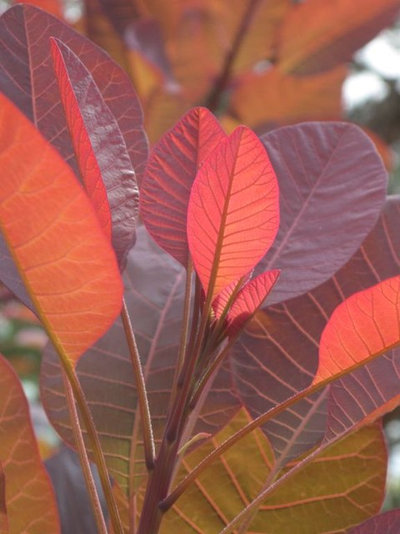
Banyon Tree Design Studio
1. Set the scene with bold foliage.Grace smoke bush is a garden showstopper from May to November with its translucent blue-purple leaves that seem to be on fire when lit by the sun.
Allow it to grow unchecked to enjoy the smoky "flowers" or hard prune each spring to keep the bush smaller and enjoy even larger, more luscious leaves.
Botanical name: Cotinus ‘Grace’ (syn.
Cotinus x 'Grace')
Common name: Grace smoke bush (syn. Grace smoke tree)
USDA zones: 4
to 9
(find your zone)
Water requirement: Average to low
Light requirement: Full sun
Mature size: 10 to 15 feet tall and wide; 6 feet tall and wide with annual pruning
When to plant: Spring or fall
Caution: Smoke bushes are considered invasive in some parts of the U.S., although this is not a problem where I live, in the Seattle area. Check with your local cooperative extension office for advice.
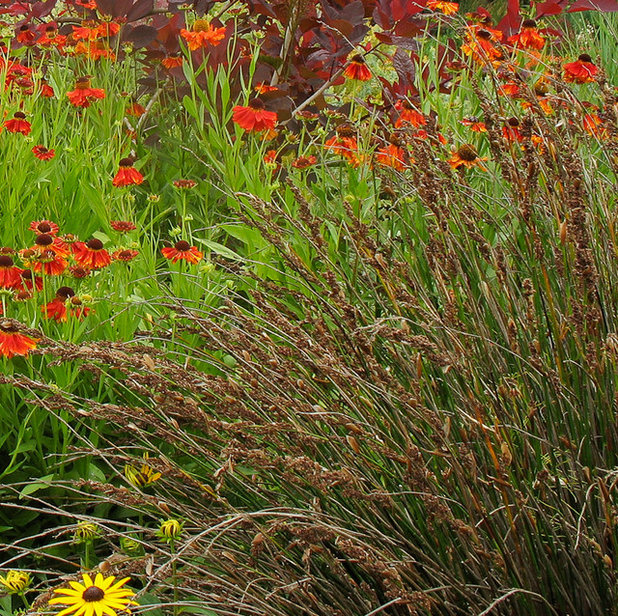
Le jardinet
2. Complete the leafy framework with soft grasses.Grasses add movement, color and a finer texture to the scene. A shorter grass is ideal for using at the front of the combination, since it's just high enough to mask the green stems of the flowers, while the smoky color emphasizes their dark central cones.
Although it was not possible to get an accurate identification of the plant used in this combination (shown in close-up here), it is very similar to cape rush, shown below.
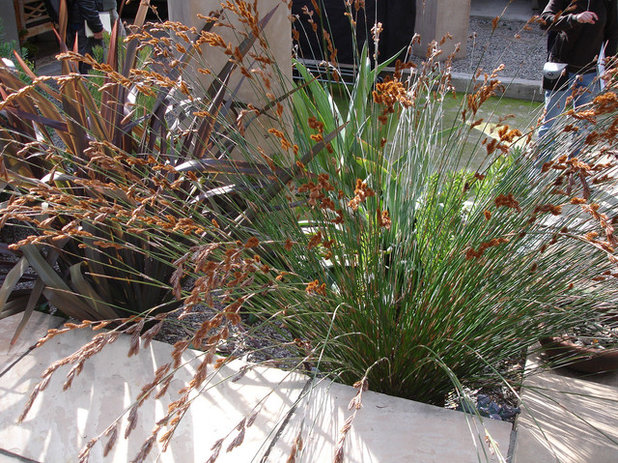
joycka
This architectural grass remains attractive year-round.
Botanical name: Chondropetalum tectorum Common names: Cape rush, small cape rush
USDA zones: 8
to 10
Water requirement: Low
Light requirement: Full sun or partial shade
Mature size: 2 to 3 feet tall and wide
When to plant: Spring or fall
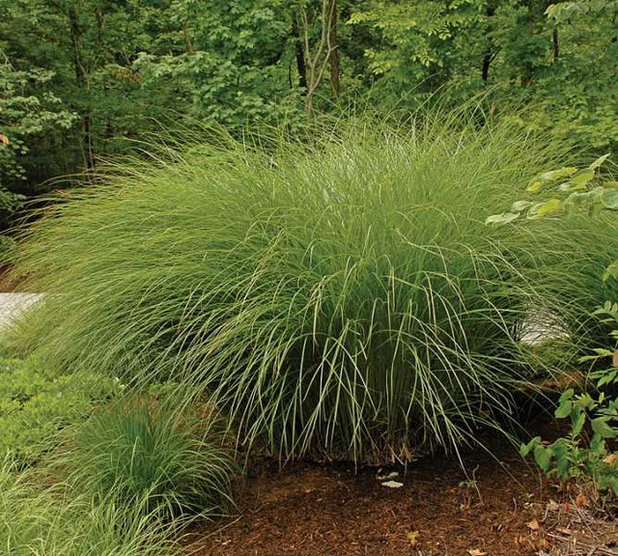
Missouri Botanical Garden
Taller grasses, such as maiden grass, add a soft upper frame to the scene. There are several cultivars to choose from, such as Gracillimus, shown here.
Botanical name: Miscanthus sinensis 'Gracillimus'
Common name: Gracillimus maiden grass
USDA zones: 5
to 9
Water requirement: Average to low
Light requirement: Full sun
Mature size: 4 to 7 feet tall and 3 to 6 feet wide
When to plant: Spring or fall
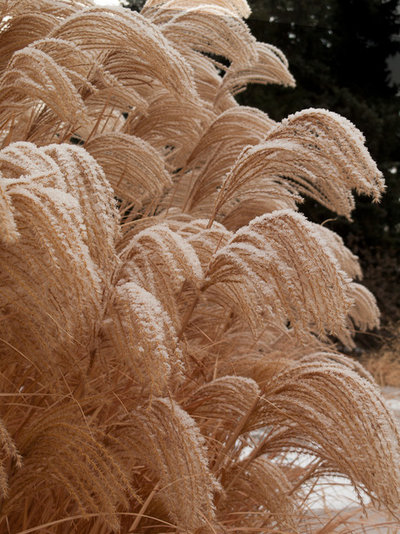
Le jardinet
Gracillimus looks especially beautiful in winter when its soft tan flowers and stems are coated in frost.
Caution: Maiden grasses are considered invasive in some parts of the U.S., although this is not a problem where I live, in the Seattle area. Check with your local cooperative extension office for advice.
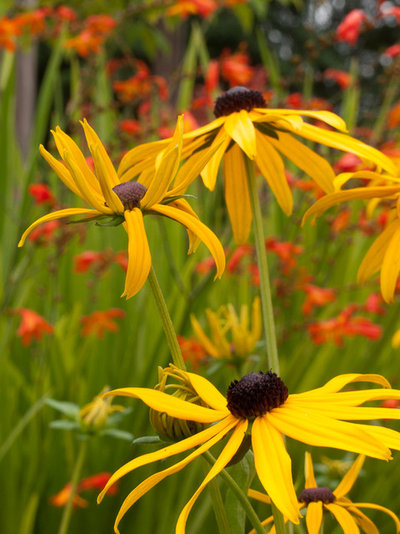
Le jardinet
3. Fill in with richly colored flowers that echo the foliage colors.Black-eyed Susans are surely the epitome of a midsummer border with their classic golden-yellow daisies, each with a chocolate-colored central cone.
Drought tolerant, deer resistant, long blooming and a great cut flower — these are just some of the many reasons to include this old-fashioned perennial in your garden. Combine it with great foliage, as shown here, and your design will be both richer and longer lasting.
Botanical name: Rudbeckia hirta 'Goldsturm'
Common name: Black-eyed Susan
USDA zones: 3
to 9
Water requirement: Low
Light requirement: Full sun or partial shade
Mature size: 2 feet tall and wide
When to plant: Spring or fall
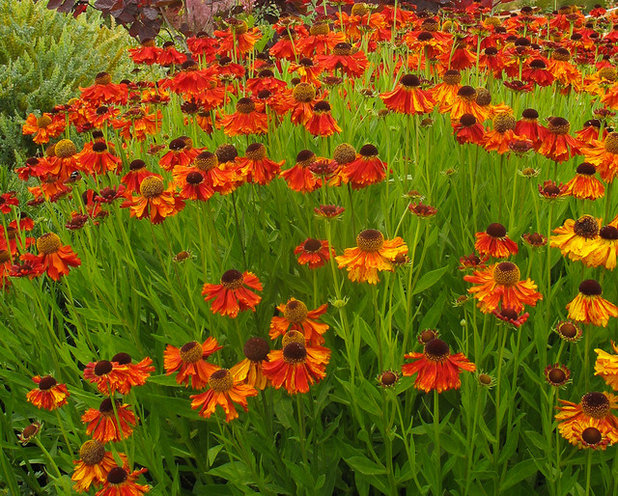
Le jardinet
Mardi Gras sneezeweed is a total exhibitionist. I love it for its brazen colors, which scream, "Look at me!"
Far from being a simple orange daisy, this perennial has a stiff skirt of downward-curving petals splashed wildly with golden yellow that seem to push forward the dark mounding center cones. As the flowers mature, this deep brown center becomes studded with spidery yellow anthers displaying their pollen, adding another layer of drama.
As if that weren't enough, the buds resemble chocolate buttons wearing a necklace of orange beads. The result is pure festivity.
Botanical name: Helenium spp
Common names: Sneezeweed, Helen's flower
USDA zones: 3
to 9
Water requirement: Low
Light requirement: Full sun or partial shade
Mature size: 3 feet tall and wide
When to plant: Spring or fall
Get more planting ideas | What to Do in Your Garden Now





